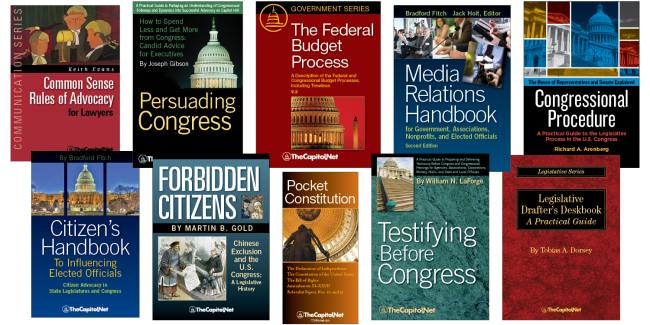From the Congressional Glossary – Including Legislative and Budget Terms
Code of Federal Regulations / CFR

The Code of Federal Regulations (CFR) is the codification of the general and permanent rules published in the Federal Register by the executive departments and agencies of the federal government. It is divided into fifty titles that represent broad areas subject to federal regulation; the CFR and U.S. Code titles, however, do not correspond to each other. Each volume of the CFR is updated once each calendar year. Each Title is divided into chapters that are assigned to agencies issuing regulations pertaining to that broad subject area. Each chapter is divided into parts and each part is then divided into sections — the basic unit of the CFR.
Items in the CFR are typically cited by title and section, with year; 34 C.F.R. § 1100.2 (2003), and 20 C.F.R. 404.1520, indicating Title 20, part 404, and section 1520.
The purpose of the CFR is to present the official and complete text of agency regulations in one organized publication and to provide a comprehensive and convenient reference for all those who may need to know the text of general and permanent Federal regulations.
Master the CFR: Intro to the Code of Federal Regulations
The CFR is keyed to and kept up-to-date by the daily Federal Register. These two publications must be used together to determine the latest version of any given rule. When a federal agency publishes a regulation in the Federal Register, that regulation usually is an amendment to the existing CFR in the form of a change, an addition, or a removal.
Title 3 of the CFR cumulates executive orders, proclamations, and other presidential administrative orders.
The 50 subject matter titles contain one or more individual volumes, which are updated once each calendar year, on a staggered basis. The annual update cycle is as follows: titles 1-16 are revised as of January 1; titles 17-27 are revised as of April 1; titles 28-41 are revised as of July 1; and titles 42-50 are revised as of October 1. Each title is divided into chapters, which usually bear the name of the issuing agency. Each chapter is further subdivided into parts that cover specific regulatory areas. Large parts may be subdivided into subparts. All parts are organized in sections, and most citations to the CFR refer to material at the section level.
Visualizing the growth of federal regulation since 1950
To assist the user between revisions, there is the List of CFR Sections Affected (LSA), which shows amendments published in the Federal Register and not yet incorporated into the appropriate, revised CFR title. The LSA is published quarterly and cumulates amendments to a title until that title is next revised. Available online at Govinfo.gov.
CFR – Govinfo.gov
A full set of the CFR consists of approximately 200 volumes. The approximately 200 CFR volumes are revised at least once a year on a quarterly basis.
|
|
|
|
|
|
Code of Federal Regulations (2014)
Also see Committee Veto / Congressional Veto; Federal Register; Office of Information and Regulatory Affairs (OIRA); Public Law (Pub. L.); Statutes at Large; U.S. Code; § 5.40 Federal Regulations, § 5.44 Code of Federal Regulations, in Real World Research Skills; § 9.70 Laws and Their Codification, in Congressional Deskbook.
More
- Electronic Code of Federal Regulations – eCFR
- Code of Federal Regulations (CFR) annual edition – Govinfo.gov
- Code of Federal Regulations – Legal Information Institute
- List of CFR Sections Affected (LSA) – Govinfo.gov
- “Federal Regulatory Reform: An Overview,” CRS Report IB95035 (15-page PDF
 )
) - “Tracking Current Federal Legislation and Regulations: A Guide to Basic Sources,” CRS Report 98-461 (21-page PDF
 )
) - “From Slip Law to United States Code: A Guide to Federal Statutes for Congressional Staff,” CRS Report R45190 (17-page PDF
 )
) - “Regulatory Reform 10 Years After the Financial Crisis: Dodd-Frank and Securities Law,” CRS Report R54163 (33-page PDF
 )
) - “Researching Current Federal Legislation and Regulations: A Guide to Resources for Congressional Staff,” CRS Report RL33895 (17-page PDF
 )
)
Courses
- Congressional Operations Briefing – Capitol Hill Workshop
- Drafting Federal Legislation and Amendments
- Writing for Government and Business: Critical Thinking and Writing
- Custom, On-Site Training
- Drafting Effective Federal Legislation and Amendments in a Nutshell, Audio Course on CD
- Congress, the Legislative Process, and the Fundamentals of Lawmaking Series, a Nine-Course series on CD
Publications
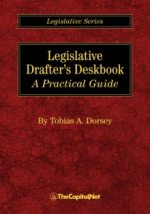
Legislative Drafter’s Deskbook: A Practical Guide
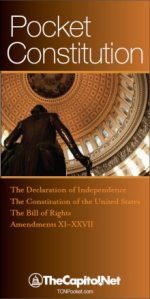
Pocket Constitution
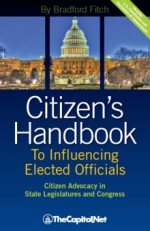
Citizen’s Handbook to Influencing Elected Officials: A Guide for Citizen Lobbyists and Grassroots Advocates
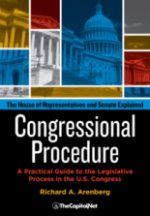
Congressional Procedure
CongressionalGlossary.com, from TheCapitol.Net
For more than 40 years, TheCapitol.Net and its predecessor, Congressional Quarterly Executive Conferences, have been teaching professionals from government, military, business, and NGOs about the dynamics and operations of the legislative and executive branches and how to work with them.
Our custom on-site and online training, publications, and audio courses include congressional operations, legislative and budget process, communication and advocacy, media and public relations, testifying before Congress, research skills, legislative drafting, critical thinking and writing, and more.
TheCapitol.Net is on the GSA Schedule, MAS, for custom on-site and online training. GSA Contract GS02F0192X
TheCapitol.Net is now owned by the Sunwater Institute.
Teaching how Washington and Congress work ™

